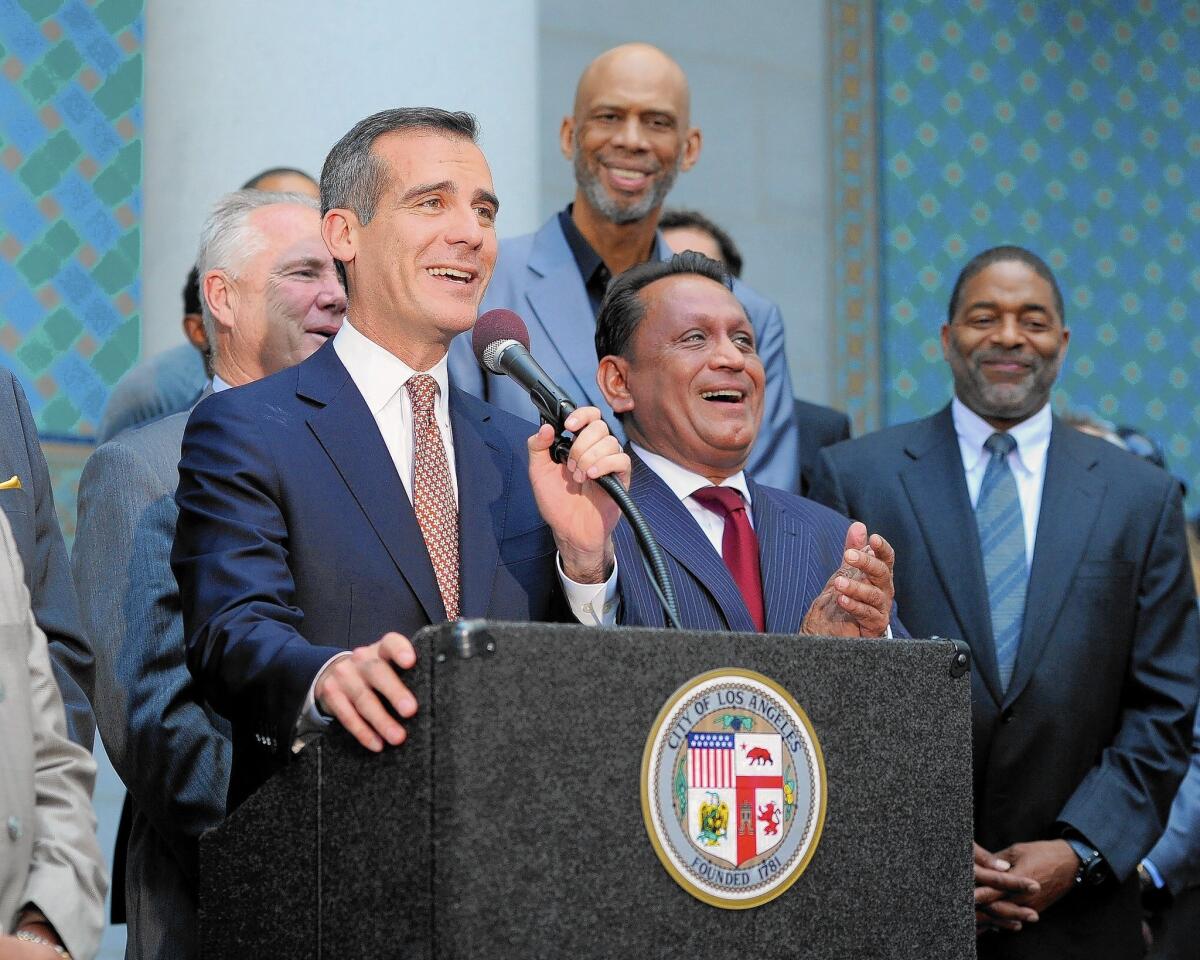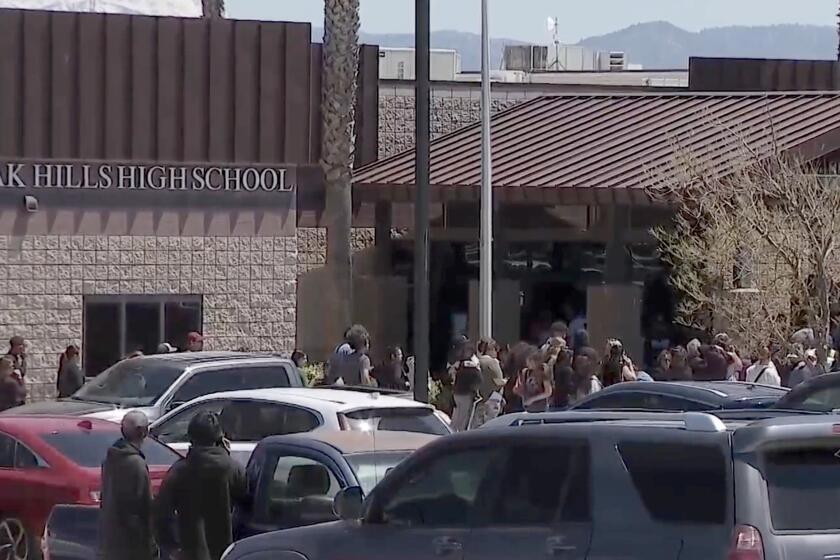Response to the Sterling incident offers reasons for hope

I never met my grandparents on my father’s side. They came to California from Spain in search of a better life and died before I was born, passing down the name I’ve carried around now for 60 years.
I never gave any thought to being a Lopez when I was a kid, just as I never gave much consideration to the last name of my Italian grandparents on my mother’s side. But when I got older, I began noticing double takes. Some people were bold enough to tell me, flat-out, that I didn’t look like a Lopez.
What’s a Lopez supposed to look like? I wondered.
The comments caused me to struggle a little with my identity. I wasn’t sure whether to check the “Hispanic” or “Caucasian” boxes on applications, and a girl I dated in college confessed that her parents didn’t want her getting involved with a guy named Lopez. I routinely heard people mouth off about color, but I was too young, stupid and insecure to know how to respond.
I was a ballplayer in high school and will never forget the time when a white teammate forgot there was a black teammate at a party. When the white guy used the N-word, a crushing look of betrayal crossed the face of our black teammate, and I knew I had to get out of that town.
But the problem was the time and not the town. No matter how far or fast you run, even now, you can’t escape all the yahoos. The strangest part of my experience as a Lopez who looks more like a Smith is 30 years of sifting through mail from readers revealing their hateful souls. They see the name, and they can’t help themselves.
I’ve been called every slur there is, often in capital letters and with lots of exclamation points. I’ve been called a racist, an illegal alien, an enemy of white people and an apologist for minorities. And if I had a dollar for every time someone told me to go back to Mexico, I’d be able to make a sizable down payment on the Los Angeles Clippers.
On a recent column about Archbishop Jose Gomez’s support of immigration reform, a reader named Kathryn wrote: “I suggest you and your amigos return to Tijuana.” In the past, readers suggested I leave town and take former Mayor Antonio Villaraigosa with me.
And the racist hate mail some of my minority colleagues get is even worse.
Why am I telling you this? To make the point that Clippers owner Donald Sterling — who the NBA determined was recorded telling a female acquaintance not to bring her African American friends to his basketball games — is not an anomaly. Racism is like smog. It’s not as bad as it used to be, but it’s still out there in many forms.
For all of that, though, I think last week was a pretty good week — a modest milestone, even — in the history of race relations.
“I want to make clear that what we heard today isn’t just about basketball,” L.A. Mayor Eric Garcetti said at City Hall, flanked by black and white current and former NBA players and by Kevin Johnson, former NBA star and current mayor of Sacramento. He spoke just after the NBA commissioner condemned Sterling’s comments and banned him for life from associating with his team, and while he stated the obvious, it was worth saying.
“This is about Los Angeles,” Garcetti went on. “The Clippers have on their jerseys this city’s name. A name that stands for tolerance and openness. Diversity. It stands for civil rights. It stands for breakthroughs, and most of all it stands for basketball excellence.”
If I may quibble, I’m not sure Los Angeles stands most of all for basketball excellence. And maybe there was a bit of a political calculation on the part of the mayor, who was elected without strong support from African American voters. The city Garcetti runs has been accused of discriminatory hiring practices in the planning department, and he faced questions about how South Los Angeles missed out on federal poverty-fighting funds.
But I don’t doubt that we saw the real Garcetti speak out about Sterling, and I liked the sentiment he expressed, as well as the shoulder-to-shoulder condemnation of fear and ignorance. Johnson, who is African American, called the NBA decision “a defining moment in our history.”
Laker guard Steve Nash, who’s white, posed a question that has no answer but has to be asked.
“If racism is a learned behavior, how long will it go on for? How long will people be taught to be bigoted, to discriminate, and to instill hatred in our communities?”
A sobering comment, for sure. But let’s not forget that people of all colors waved signs outside Staples Center condemning racism. Advertisers pulled their support of the team, meaning that even if Sterling fights to keep the Clippers, his very presence could destroy the franchise as players, fans and sponsors flee.
I think we’ve made a lot of progress and that a better day is coming. Younger generations are growing up in a multiracial social media universe, and cranky old-school bigotry may become the domain of a shrinking class of knuckle-draggers.
California is a more diverse and evolved state than it was when I was growing up. I still get ugly mail, and I’m sure this column will bring more of it. But when I bother to look closely enough, I often notice it’s the same people who have written before, with nothing better to do and nothing worth saying.
More to Read
Start your day right
Sign up for Essential California for news, features and recommendations from the L.A. Times and beyond in your inbox six days a week.
You may occasionally receive promotional content from the Los Angeles Times.







